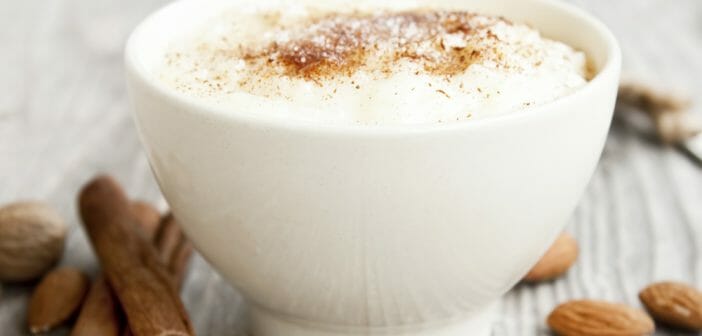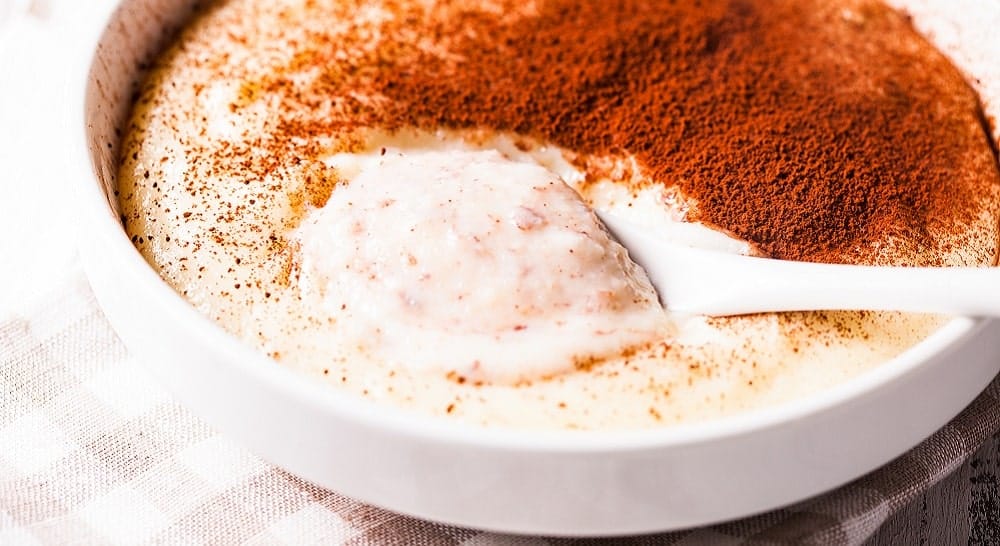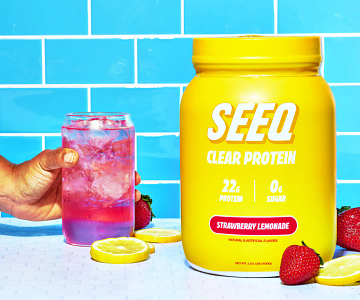- Fact Checked
Last Updated: August 29, 2022
Bodybuilding is about more than pumping iron and resting your sorely worked-out muscles. Outstanding nutrition is essential to a serious competitor. What you put into your body is as important as what you do for it in the gym.
Aspiring and professional bodybuilders should carefully research the foods they plan to eat. This way they can ensure they know exactly what they’re putting into their body. But they can also make it taste delicious with the right recipes and a little experimentation.
Food is fuel, but cooking and partaking in meals are a critical part of being human, too! Be sure to give yourself good flavors and textures to enjoy in your diet as well as essential nutrients.
With cream rice, bodybuilding efforts can be enhanced. In this article, you’ll learn all about the benefits of cream rice for bodybuilding. If you’re unfamiliar with cream rice, now is your chance to find out what it is, how it adds to your nutrition, what it can do for you as a bodybuilder, and most importantly how to make it.
Cream rice is a simple hot dish made from rice flour (ground rice), milk, and cream. It’s also known as creamed rice or cream of rice. Since it’s a basic dish with simple ingredients, it has many variations worldwide.
Kamby arro is a popular Paraguayan dessert. Its ingredients vary, but the basics include:
These ingredients are boiled, mixed until creamy, dusted with cinnamon, and served cold.

Kheer is a sweet dessert that was a staple of ancient India and is still enjoyed today. It’s made by boiling milk, sugar, and rice, with a host of possible additives for flavor.
Popular additional ingredients include pistachios, coconut shavings, cashews, raisins, and other dried fruits or nuts. It can be served warm or cold.
Congee is a dish found throughout East and Southeast Asia. Its ingredients, preparation, and even name vary depending on the country or region. But every variant is based on rice boiled for extended periods in water until disintegrated. Because of its mild taste and high digestibility, it’s often eaten when sick and is considered therapeutic in some cultures.
/basic-congee-recipes-4065244-7_preview1-5b339f0ac9e77c005bcfe2f1.jpeg)
Cream rice is also similar to rice pudding or rice cereal in content and texture. Rice pudding is made by mixing rice with water or milk and occasionally sugar and eggs. Typically, it doesn’t contain cream, but some variations on the recipe do add some. Many cooks also add ingredients to give it a stronger taste, such as raisins, cinnamon, or vanilla.
Rice cereal is typically only used as baby food since it’s thinner and easy to digest. Though it’s definitively based on rice, its ingredients vary depending on the manufacturer or recipe.
It has come under controversy in recent years due to the discovery of toxic and carcinogenic ingredients in the products.
You might be able to make cream rice taste delicious with the recipes and possible additions. But the fact remains that cream rice generally isn’t eaten for its outstanding taste.
For many, the thick, “gloopy” texture is unappealing. Because it’s made from plain rice, it can have a bland flavor.
The strong points of cream rice are how simple it is to make and its nutritional value. The latter point is far more important for bodybuilding.
On average, one cup of cream rice contains:
However, the boxed varieties tend to be high in sodium, so for a low-sodium version of the meal, try making it yourself at home.

Cream rice is also gluten-free, making it a fantastic option for people with dietary restrictions. Rice flour, in general, can be an excellent alternative to wheat products. There are also many vegetarian and vegan options on the market.
You can make this dish with white rice or brown rice. Both varieties have pros and cons regarding their nutritional value, taste, and texture.
White rice is a refined grain, meaning it has been significantly altered from its original condition. Since it has the bran and germ (the hull and core of the grain) removed, it loses a considerable amount of the nutrients that brown rice retains.
In exchange, it’s softer and easier to cook. It’s also easier to digest, as it lacks the phytic acid that makes brown rice tougher and interferes with your ability to absorb nutrients, such as iron and zinc. It’s also lower in arsenic content than brown rice.
Brown rice is generally considered the healthier of the two. As a whole grain, it’s unmodified and contains more nutrients than white rice, though it is harder to cook and digest. It’s high in antioxidants, magnesium, and fiber, which lower your blood sugar levels and reduce your risk of heart disease and diabetes. Brown rice also promotes weight loss.
Cream rice has many qualities and components that make it an ideal food for the dedicated bodybuilder. If you want to be able to power through the toughest workouts, you should consider including these ingredients in your diet.
Carbohydrates are a staple of the bodybuilding diet because they’re essential to building muscle and providing the energy you need to achieve peak physical fitness.
A few hours before and after intense workouts, you should eat meals heavy in complex carbohydrates to build up your body’s stores of glycogen, extra glucose that your body stores in the muscles.
Unlike simple carbohydrates, like sugary snacks, which are absorbed quickly and cause a subsequent “crash,” complex carbohydrates like rice, pasta, bread, and other starches take a long time to digest. As such, they will fuel you all day and help you recover later.
If your body doesn’t have enough glycogen, it will consume muscle tissue instead to get energy from amino acids. You don’t want that after all the hard work you did to build those muscles!
Rice is a very healthy choice of carbohydrates. While it doesn’t contain as many essential vitamins and minerals as richer grains, like oats or barley, it’s high in vitamin B5 and folate (vitamin B9).
Vitamin B5 promotes the creation of red blood cells, which oxygenate the body, and play a critical role in breaking down the carbs and fats you eat for energy. Folate is also crucial to red blood cell health and cell growth as a whole.
Rice is also low in fat and high in iron, potassium, magnesium, fiber, and other essential nutrients.
Cream rice for bodybuilding often incorporates milk or cream. This addition makes cream rice higher in protein, calcium, casein, and B vitamins that enable muscle growth.
For vegan cream rice, you can substitute dairy milk for vegan alternatives, such as almond, soy, or oat milk. Each milk has its benefits that you should consider along with your flavor preferences.
Soy milk is the highest in protein, making it perfect for making a cream rice dish that’s satiating and muscle-building. Soy milk also is rich in omega-3 fatty acids, calcium, folate, potassium, and vitamin A.
Almond or macadamia milk may be the better option if you’re looking to enhance the taste of your cream rice. However, due to their high water usage, these milks are less environmentally sustainable.
Oat milk is a healthy and sustainable option that will add creaminess to the dish. Oat milk is packed with essential nutrients, such as:
It’s also often fortified with vitamin B12.
Coconut cream is a fantastic alternative to dairy cream, but it should be used in moderation as it has a high-fat content.

Many variations on cream rice add other ingredients to give the dish more body or flavor. It’s common to throw an egg into the mix to thicken and enrich the cream rice.
If you don’t eat eggs, there are plenty of other ways to make cream rice nutrient-dense and delicious.
Adding chia seeds and fruit to your cream rice will give you a more well-rounded meal. The chia seeds will add additional fiber, iron, and selenium to the dish. They also contain an antioxidant called quercetin, which helps reduce your risk of heart disease.
Berries will give you even more antioxidants, or you could go with other nutrient-dense fruits, like bananas or mangos.
If you’re looking for a way to enhance rice cream’s texture, add some roasted nuts. This addition will add a protein-packed crunch. For a hearty sweet version, add maple syrup and robust spices, such as cinnamon.
Alternatively, you could add some savory meat alternatives for an umami meal that will give you enough energy to power through any workout.
[thrive_leads id=’11437′]
Since its release as a boxed recipe by brands such as Bob’s Red Mill and Nabisco, the most common way to enjoy cream rice is to buy the instant variety. Once you’ve purchased your box of cream rice, all you need to do is mix the contents with water and heat them on the stove or in the microwave.
However, if you want to adapt the dish or simply want that personal touch, you can cook your cream rice from scratch. You can buy bagged rice flour or grind your rice using a blender, food processor, or coffee grinder.
Over medium heat, bring your vegan milk to a slow boil, and gradually add rice, stirring constantly. When you add all your rice, cover and simmer until thick. It can take anywhere from 5 to 15 minutes. When the rice has absorbed all milk, add any extra ingredients you wish to include.

Once you’ve made the cream rice, you’ll want to enjoy it immediately. This dish isn’t the best for meal prepping if you make it fresh, since it doesn’t store well in the fridge.
Though you don’t want to add too much sugar or fat to your freshly made bowl of cream rice, you can mix many healthy additives into your dish for extra nutrients or taste.
Dried fruit and nuts add fiber, essential vitamins, and minerals, giving the dish a healthy antioxidant boost. And while cinnamon and vanilla are excellent for your heart health, they’re also delicious!
Experimenting with recipes is one of the most enjoyable things to do as a cook. It’s also one of the most helpful things you can do on a strict diet. Recipes for cream rice vary considerably worldwide and by the individual. If you look extensively enough, you can find recipes that perfectly suit your needs.
The ideal cream rice recipes for bodybuilding contain vegan milk, not water, to achieve maximum protein content. It will skimp on fats and be heavy on rice (naturally). In addition, any additional ingredients will be low in fat and sugar and high in protein and vitamins.

Since the dish is relatively plain, it makes for the perfect base to add your favorite protein powder. You can opt for extravagant flavors or celebrate rice cream’s mild taste by adding an unflavored protein powder.
In summary, cream rice is an excellent addition to the diet of a dedicated bodybuilder. It’s a healthy source of carbohydrates, proteins, and essential vitamins and minerals that promote muscle growth and give the body energy.
Not only that, but it’s simple to cook and easy to digest. The dish is easy to modify to increase protein or vitamin content according to your tastes and your body’s needs. Whether you’re a total beginner or an expert, with cream rice bodybuilding becomes that much easier.
If you want to learn more about gut health, successful vegan diets, fitness, and more, keep exploring our website! We have more than enough articles to satisfy your curiosity about how to live the healthiest life possible.
https://www.allrecipes.com/recipe/24059/creamy-rice-pudding/
https://www.health.harvard.edu/blog/fda-warns-parents-about-arsenic-in-rice-cereal-201604059473
https://www.healthline.com/health/food-nutrition/brown-rice-vs-white-rice
https://www.healthline.com/nutrition/phytic-acid-101
http://veganliftz.com/best-vegan-iron-supplement/
https://www.hsph.harvard.edu/nutritionsource/folic-acid/#:~:text=Folate%20is%20the%20natural%20form,50%25%2C%20respectively.
https://www.webmd.com/diet/health-benefits-chia-seeds#:~:text=Chia%20seeds%20contain%20quercetin%2C%20an,risk%20of%20developing%20heart%20disease.&text=Chia%20seeds%20are%20high%20in%20fiber.
http://veganliftz.com/best-unflavored-protein-powder/


Address: 1300 Avenida Vista Hermosa, San Clemente, CA 92673, United States | Phone Number: +1 (949) 248-0131 | Email: contact@veganliftz.com